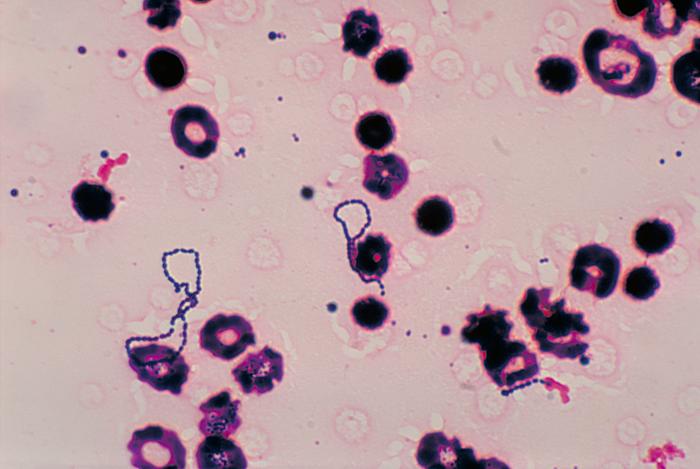| Streptococcus viridans-group | ||||||||||||
|---|---|---|---|---|---|---|---|---|---|---|---|---|
| File:Streptococcus viridans 01.png | ||||||||||||
| Scientific classification | ||||||||||||
|
Editor-In-Chief: C. Michael Gibson, M.S., M.D. [1]
Overview[edit | edit source]
Streptococcus viridans is a pseudo-taxonomic term for a large group of generally non-pathogenic, commensal streptococcal bacteria that are either α-hemolytic and produce a green (hence the name viridans) coloration on blood agar plates, or non-hemolytic.[1]
Identification[edit | edit source]
Viridans streptococci can be differentiated from Streptococcus pneumoniae using an optochin test, as Viridans streptococci are optochin resistant; they also lack either the polysaccharide-based capsule typical of S. pneumoniae or the Lancefield antigens of the pyogenic members of the genus.[2]
Pathology[edit | edit source]
The organisms are most abundant in the mouth and one member of the group, S. mutans, is the etiologic agent of dental caries. Others may be involved in other mouth or gingival infections.
If they are introduced into the bloodstream they have the potential of causing endocarditis, particularly in individuals with damaged heart valves.
Blood culture specimen, depicts numbers of Gram-positive, a-hemolytic viridans streptococci group bacteria. From Public Health Image Library (PHIL). [3]
References[edit | edit source]
- ↑ Ryan KJ, Ray CG (editors) (2004). Sherris Medical Microbiology (4th ed. ed.). McGraw Hill. pp. 293–4. ISBN 0838585299.
- ↑ Patterson MJ (1996). "Streptococcus". Baron's Medical Microbiology (Baron S et al, eds.) (4th ed. ed.). Univ of Texas Medical Branch. ISBN 0-9631172-1-1.
- ↑ "Public Health Image Library (PHIL)".
